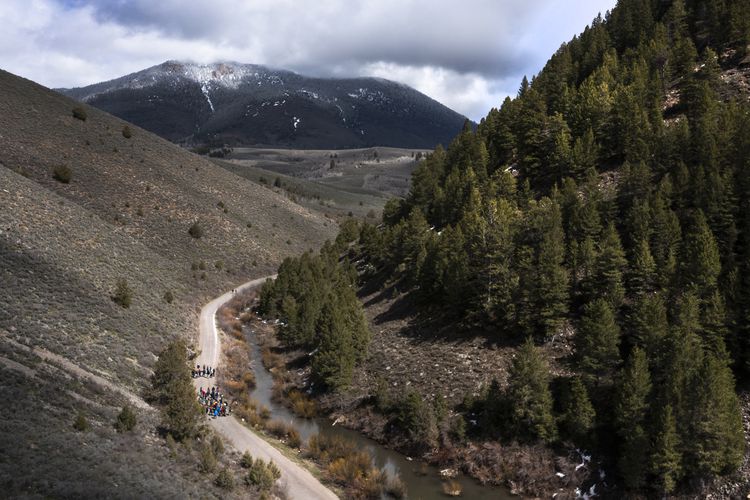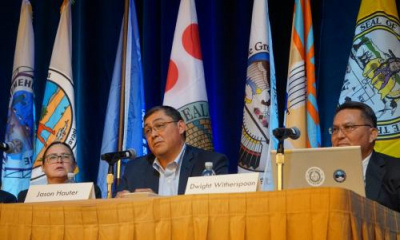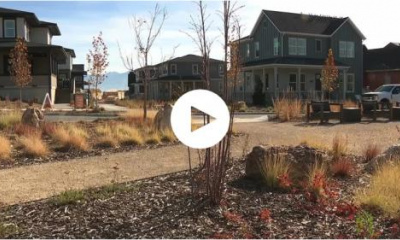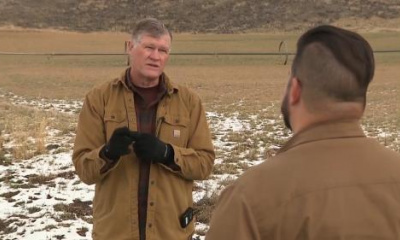In Cache Valley, district manager sees smaller-scale projects as a solution to supply concerns and securing more water for the Great Salt Lake.
Logan Canyon • Temple Fork is a beloved hiking area by many Cache Valley locals, home to one of the few sites where Bonneville cutthroat continue to thrive.
But someday, the scenic tributary located about 15 miles up Logan Canyon could be inundated by a dam. It’s a concept some environmental and river advocates find unfathomable, while area water managers say it’s urgently needed to meet the pressures of a growing population and climate change.
Temple Fork is one of six dam sites the state identified as part of the controversial Bear River Development. That project would shore up 220,000 acre-feet from the Bear River and its tributaries — the largest water source for the Great Salt Lake. Of that water, 60,000 acre-feet would go to Cache Valley, and the remainder would get pumped to customers along the Wasatch Front.
When the Legislature passed the Bear River Development Act in 1991, lawmakers believed Utah’s booming population would need all that storage by 2015. But the Utah Division of Water Resources determined in 2019 the project could be pushed off until 2050, largely due to conservation efforts.
“We don’t totally agree that we don’t need the water until 2050,” Nathan Daugs, manager for the Cache Water District, told a group of Utah State University students, state regulators and community members during a sometimes sunny, sometimes snowy field trip last week.
“We could have used more water last year in Cache County,” he said. “We could use more water this year in Cache County.”
County voters formed the Cache Water District in 2016 to better manage water resources and to have a stronger voice in projects like the Bear River Development. Still, it remains a relative murmur compared to the clout of some of the state’s larger water districts.
The Cache Water District has a $275,000 budget this year. By comparison, the Jordan Valley Water Conservancy District boasts a budget of $122 million. Daugs, hired in 2018, is the Cache Water District’s only employee.
“If you go to Jordan Valley or Weber Basin, those districts were formed 50-plus years ago in conjunction with big reservoir projects, and they were formed to deliver that water,” Daugs said. “We were built backward. We were built with no water supply for anyone, but [have to] plan for how to get water to everyone 50 years from now.”
Cache County’s population of 137,000 is projected to swell by more than 50% before the Bear River projects might break ground, and the district is already facing challenges in the present.
Waterways are running dry
Last year, Daugs said, every river and creek ran dry before reaching the Bear River, including the Logan River. Hyde Park was mere days from running out of water entirely until the city asked residents to cut their outdoor irrigating in half.
“If someone’s house would have started on fire,” Daugs warned, “it would have burned down because their tanks didn’t have enough.”
While bigger Utah cities have reservoirs to draw on during these dry spells, most Cache Valley communities rely on springs and groundwater.
“Today, that’s a very reliable source,” Daugs said. “Two decades from now, it may not be.”
Area municipalities don’t have backup water sources, making them vulnerable to climate change, Daugs said. That’s why he would like to see some reservoir projects developed in Cache County sooner than the state’s projected Bear River Development timeline.
Many Utahns, however, appear to be losing their appetite for more dams, especially as the Great Salt Lake becomes desiccated and presents a looming public health disaster due to blowing dust.
Temple Fork is a frequently lauded environmental victory to boot. Around two decades ago, USU students, anglers and government agencies worked to restore overgrazed habitat around Spawn Creek, one of the stream’s tributaries. The area became an important habitat and breeding ground for the Bonneville cutthroat trout, Utah’s state fish and a species once thought extinct in the 1970s.
The state’s Bear River Development proposal would put at 327-foot-tall dam on Temple Fork near its confluence with the Logan River, wiping out all that fish habitat. The dam would hold around 41,000 acre-feet of storage and a lake roughly the size of Pineview Reservoir near Ogden. Much of its water would get pumped up from the Logan River.
The state’s proposal includes two other dams so Cache County could get its full 60,000 acre-foot allotment — one directly on Bear River and another on Cub River. But Daugs said Temple Fork has many advantages. It’s not as silty as the Bear, and its elevation in Logan Canyon means the water can flow downhill to all the population centers instead of being pumped.
Last year, Daugsasked some USU engineering students to explore a smaller project instead — a dam farther up Temple Fork that stored only Temple Fork water, avoiding all the pumps on the Logan River and restoration work around Spawn Creek. That proposal would store 10,000 acre-feet, creating a reservoir about double the size of Newton Reservoir and half the size of Hyrum Reservoir.
“If we had even a small reservoir here, we could keep the Logan River flowing potentially all season long,” Daugs said. “And then those environmental flows could be dedicated or shepherded to the Great Salt Lake in those drier years.”
The Cache Valley Water District proposes to dam Temple Fork, a tributary of the Logan River, to create a reservoir that would supply future water needs.
No dams ‘in the next decade’
The Cache Water District is working with engineering students and consulting firms to explore smaller dams in other areas of the valley as well, including on Blacksmith Fork near Hyrum. But Cache County residents shouldn’t expect new reservoirs anytime soon — dams typically take long planning processes, environmental reviews and construction periods.
“We’re not going to be starting a dam in the next decade for sure,” Daugs said. “Probably not before I retire.”
Marisa Egbert, Bear River Development planning manager for the Division of Water Resources, said in an interview that she had never heard of the scaled-down dam proposals until the Temple Fork field trip with USU students last week. But she said the six reservoir projects the state has identified so far will likely begin as smaller projects that grow over time in pace with water demand.
“We have expectations that things will be built in phases,” she said. “It does get tricky when you’re talking about this much water.”
And before any water districts can get the green light for a Bear River Development project, they would need to prove they have contracts for at least 70% of the developed water.
“Bear River Development is going to be extremely expensive,” Egbert said, “and it’s going to be extremely time-consuming.”
Once construction launches, the water districts are on the hook to pay back the state for the investment, which is why those contracts are important.
“I’ll be honest,” Egbert said. “There’s been no discussions with any of the water districts in the 10 years I’ve been working on this about getting ready to sign a contract.”
A dam’s environmental toll
Some Bear River advocates say there’s no need for any dams at all, even with population growth forecasts, and especially with the Great Salt Lake in dire need of more water.
“In no way, shape or form, does the Cache Valley need Bear River Development,” said Zachary Frankel, executive director of the Utah Rivers Council, labeling the dam ideas “propaganda.”
“That’s what happens in droughts,” he said of water districts. “They scare people into thinking they’re running out of water.”
Frankel pointed out that Cache County remains a largely agricultural community. In 2017, it had 276,273 acres of farmland according to the latest U.S. Department of Agriculture census.
In 2015, ascathing legislative audit found the Division of Water Resources had provided misleading projections about Utah’s future water needs, failing to collect reliable usage data. The report also noted the division did not include estimates of new supplies as agricultural land is developed into subdivisions and municipal use, which typically consume less water.
“Cache County has a massive water supply, and it’s rapidly urbanizing its irrigated agriculture,” Frankel said. “They’re playing games.”
Daugs, too, touted the valley’s farming heritage, noting that it’s one of the few places where hay is grown, sent to dairies, turned into milk, and sent to processing plants to become cheese or ice cream, then shipped to grocery stores, all mere miles apart.
“You can’t get more local production than that,” he said. “If we lose that, now we’re trucking our milk in from California.”
About 95% of the county’s farms are family-owned, according to the USDA, and more than 25% of its producers are new or beginning farmers.
Importantly, Daugs added, much of the valley’s agriculture is dry farming.
“There’s zero water associated with that,” Daugs said, “so every house we build there takes new water.”
The USDA’s census found a third of Cache County’s farmland is irrigated.
David Rosenberg, a professor in USU’s Utah Water Research Laboratory, focuses on “innovative water management” and organized the Temple Fork tour. He said his aim was to get the community thinking about water solutions long before the state breaks ground on new reservoirs.
“It’s really important to discuss a potential dam now, 30 years before it’s going to be built, to engage people in conversations about Utah’s water development,” he said. “There’s a lot that can happen between now and 30 years from now. These projects span multiple people’s careers.”
While he said a smaller reservoir on Temple Fork would mitigate some of the environmental damage the Bear River Development proposes, any dam comes with ecological consequences. He floated alternatives like more efficient agriculture and conservation as other water-saving strategies.
Water banking could prove especially promising, he said. Under that concept, a water holder could choose to put shares in a type of “bank,” withdrawing what’s needed, then leasing out what’s left. Potential lessees could be farmers who want to irrigate another cut of crops, cities facing shortages or environmental groups who want to improve stream flows for fish habitat or channel more water to the Great Salt Lake.
State lawmakers approved a pilot program for water banking in 2020. Cache Water District is one of the participants, working with two irrigation companies with shares in Hyrum Reservoir, with the experiment launching this year.
“This is more shovel ready and ready to go” than a dam, Rosenberg said. “It gives people flexibility.”
Daugs said the district is exploring and open to all options. But even with water banking, there’s a case to be made for more storage, he said, since it would make the “banking” of water easier to measure and monitor.
“It’s one more tool we can use to help,” Daugs said. “In Cache Valley, the problem is we don’t have any reservoirs to bank all that ... but if we had a couple small reservoirs and water banking, you could do a lot.”









